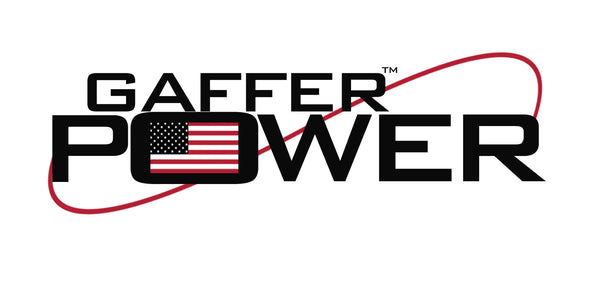You love gaffer tape as much as we do. You cringe every time someone calls it duct tape. But where does the term gaffer come from? Let's find out.
Behind every captivating stage production or mesmerizing film, there's an often underappreciated group of professionals working diligently to create the perfect lighting ambiance. At the forefront of this team are the gaffer and the lighting director, individuals responsible for designing and executing the lighting scheme. Let's delve into the rich history of these roles, tracing their origins and evolution throughout the years.
- The Early Days of Lighting:
To understand the development of the gaffer and lighting director, we must first examine the origins of stage lighting. In ancient times, performers relied on natural light sources such as the sun or fire. As theatrical productions advanced, early lighting methods included candles, oil lamps, and gaslights. These primitive lighting systems were operated by stagehands who would position and adjust the light sources manually.
- The Birth of the Gaffer:
In the early 20th century, as electrical lighting began to dominate the stage, the need for specialized individuals to handle these lighting instruments emerged. Enter the "gaffer." The term "gaffer" originated from the old English word "gaff," meaning a hook or pole used to manipulate stage lighting. Gaffers were skilled electricians who worked alongside stagehands to rig, hang, and adjust the lights. They played a crucial role in ensuring the technical aspects of lighting were executed flawlessly.
- The Rise of the Lighting Director:
As stage productions grew more complex and sophisticated, the role of the gaffer expanded to include artistic elements. This shift gave rise to the lighting director—a creative professional responsible for designing the lighting concept, coordinating with the director, and supervising the gaffer and the lighting crew. The lighting director brought a heightened level of artistic vision to the production, utilizing various lighting techniques and fixtures to enhance the overall theatrical experience.
- Technological Advancements:
The evolution of lighting technology had a profound impact on the roles of both the gaffer and lighting director. With the advent of electric lighting consoles, dimmers, and programmable systems, the gaffer's responsibilities extended beyond simply handling physical equipment. They became adept at operating these technological advancements, programming lighting cues, and collaborating closely with the lighting director to achieve the desired aesthetic effect.
- Transition to Film and Television:
As motion pictures gained popularity, the gaffer and lighting director roles seamlessly transitioned to the world of film and television. Lighting became an integral part of storytelling, allowing directors to convey moods, create atmosphere, and highlight specific elements within a scene. Gaffers and lighting directors in the film industry worked closely with cinematographers to achieve the desired visual style, employing various lighting techniques and equipment to achieve cinematic brilliance.
- Modern-Day Gaffers and Lighting Directors:
In contemporary times, the gaffer and lighting director roles have continued to evolve with advancements in lighting technology and the ever-expanding scope of visual media. LED lighting, wireless control systems, and computer-generated imagery have transformed the landscape of lighting design, offering endless possibilities for creativity and expression. Today, gaffers and lighting directors are highly skilled professionals who collaborate closely with directors, cinematographers, and production designers to create captivating visual experiences.
7. So what about Gaffer Tape?
Gaffer tape, also known as gaff tape, was invented by Ross Lowell, an American photographer, cinematographer, and inventor. Lowell introduced gaffer tape in the 1950s as a versatile and reliable adhesive tape specifically designed for use in the entertainment industry. Gaffer tape gained popularity quickly due to its strong adhesive properties, ease of tearing by hand, and ability to be removed without leaving residue. Over time, it has become an essential tool for professionals in various industries, including film, television, photography, and theater, as well as for general-purpose use.
 USA SHIPPING
USA SHIPPING MONEY BACK GUARANTEE
MONEY BACK GUARANTEE 1000+ HAPPY CUSTOMERS
1000+ HAPPY CUSTOMERS


